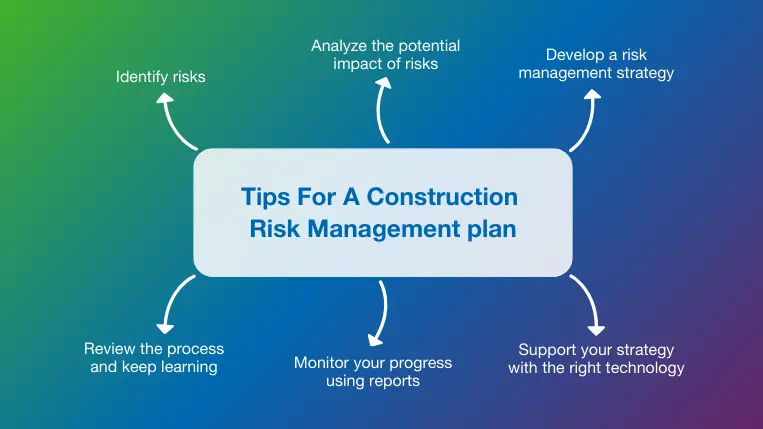The Role and Importance of Risk Management in Ensuring Organizational Continuity
The Role and Importance of Risk Management in Ensuring Organizational Continuity
Blog Article
Why the Relevance of Risk Management Can not Be Neglected in Today's Economy
In today's swiftly developing financial landscape, the function of Risk Management has ended up being essential. The enhancing volatility of markets, coupled with rising uncertainties, requires a durable device to determine and minimize potential risks. Failing to do so can lead to severe financial and reputational effects, not just for individual businesses, yet likewise for the more comprehensive economy. This increases a critical concern: can the relevance of Risk Management in making sure stability and sustainability be overlooked? The following discourse aims to discover this in better deepness.
Understanding the Concept of Risk Management

The Role of Risk Management in Today's Economy
Having grasped the principle of Risk Management, we can currently explore its function in today's economy. In the context of an unforeseeable economic landscape marked by rapid worldwide events and technological modifications, Risk Management comes to be an essential strategic component, adding to the stability, sustainability, and overall durability of economic climates on both a macro and micro range.
The Effect of Overlooking Risk Management
Overlooking Risk Management can bring about dire consequences for any organization or economic situation. When potential threats are not determined, assessed, and mitigated, companies subject themselves to commonly considerable and unexpected problems. These could show up as monetary losses, reputational damages, operational interruptions, or also legal complications. Additionally, in today's unsteady economic climate, an unforeseen dilemma can swiftly intensify, leaving an ill-prepared business rushing for survival. The international monetary dilemma of 2008 works as a stark tip of the devastating effect that overlooking Risk Management can carry the economy at big. Thus, disregarding Risk Management not just endangers specific organizations but can destabilize the entire economic situation, underscoring the critical function played by efficient Risk Management in today's economic landscape - importance of risk management.
Secret Elements of Efficient Risk Management Strategies
Effective Risk Management approaches focus on two key components: implementing and recognizing potential risks reduction actions. To make sure the stability and sustainability of an organization, these components should not be overlooked. In the following discussion, these vital facets will certainly be discovered thoroughly.
Identifying Possible Threats
Why is recognizing potential threats essential in any Risk Management approach? Recognition this page of possible dangers is the cornerstone of any kind of reliable Risk Management approach. It entails the systematic assessment Check This Out of business landscape, both internal and exterior, to discover threats that can hinder a company's calculated goals. Identifying possible risks allows companies to expect problems, instead than simply react to them. This aggressive method empowers businesses to take care of unpredictability with confidence, by highlighting locations that require more interest and preparation. It likewise enables them to focus on sources effectively, concentrating on threats that could have one of the most considerable influence on their operations. Overall, the process of recognizing prospective dangers is a vital action in fostering company resilience and advertising lasting growth.
Implementing Mitigation Steps
Browsing through the unstable service waters, organizations get started on the critical trip of executing reduction steps as component of their Risk Management techniques. These actions, designed to decrease the effect of prospective threats, create the foundation of a durable Risk Management plan. They include different approaches, including transferring the Risk to an additional event, avoiding the Risk, reducing the unfavorable result or likelihood of the Risk, or also approving some or all the consequences of a particular Risk. The selection of strategy depends upon the company's certain context, Risk resistance, and ability to birth losses. Effective mitigation requires careful planning, normal alteration, and consistent vigilance. In a stormy economy, these actions raise strength, making certain lasting survival and development.

Instance Researches: Effective Risk Management in Practice
In spite of the intricacies entailed, there are a number of instances of effective Risk Management in method that demonstrate its crucial duty in business success. The automaker rapidly established a danger Management team that reduced production downtime by identifying alternate vendors. These circumstances highlight that successful Risk Management can not only secure companies from prospective threats yet additionally allow them to take chances.
Future Patterns in Risk Management: Adapting to a Dynamic Economic Climate
Looking in advance, the landscape of Risk Management is click this link poised for substantial changes as it adapts to a vibrant economic climate. Technical developments are anticipated to reinvent the area, with automation and man-made knowledge playing a key duty in Risk identification and mitigation. At the very same time, the increasing intricacy of international markets and the unpredictability of geopolitical events are making Risk Management a lot more challenging.
Final thought
In conclusion, Risk Management plays a vital function in today's unstable and interconnected economic climate. As the economic climate continues to evolve, so must risk Management approaches, underscoring its continuous importance in an ever-changing organization landscape.
A proper Risk Management method is not about getting rid of dangers entirely - a task virtually difficult in the unpredictable globe of service. Thus, ignoring Risk Management not only intimidates private services yet can undercut the whole economic climate, underscoring the pivotal function played by effective Risk Management in today's financial landscape.
Efficient Risk Management techniques rotate around two key elements: applying and recognizing prospective risks reduction measures.Why is determining possible risks essential in any kind of Risk Management method? They include numerous methods, including moving the Risk to another celebration, staying clear of the Risk, lowering the adverse result or likelihood of the Risk, or even approving some or all the effects of a specific Risk.
Report this page